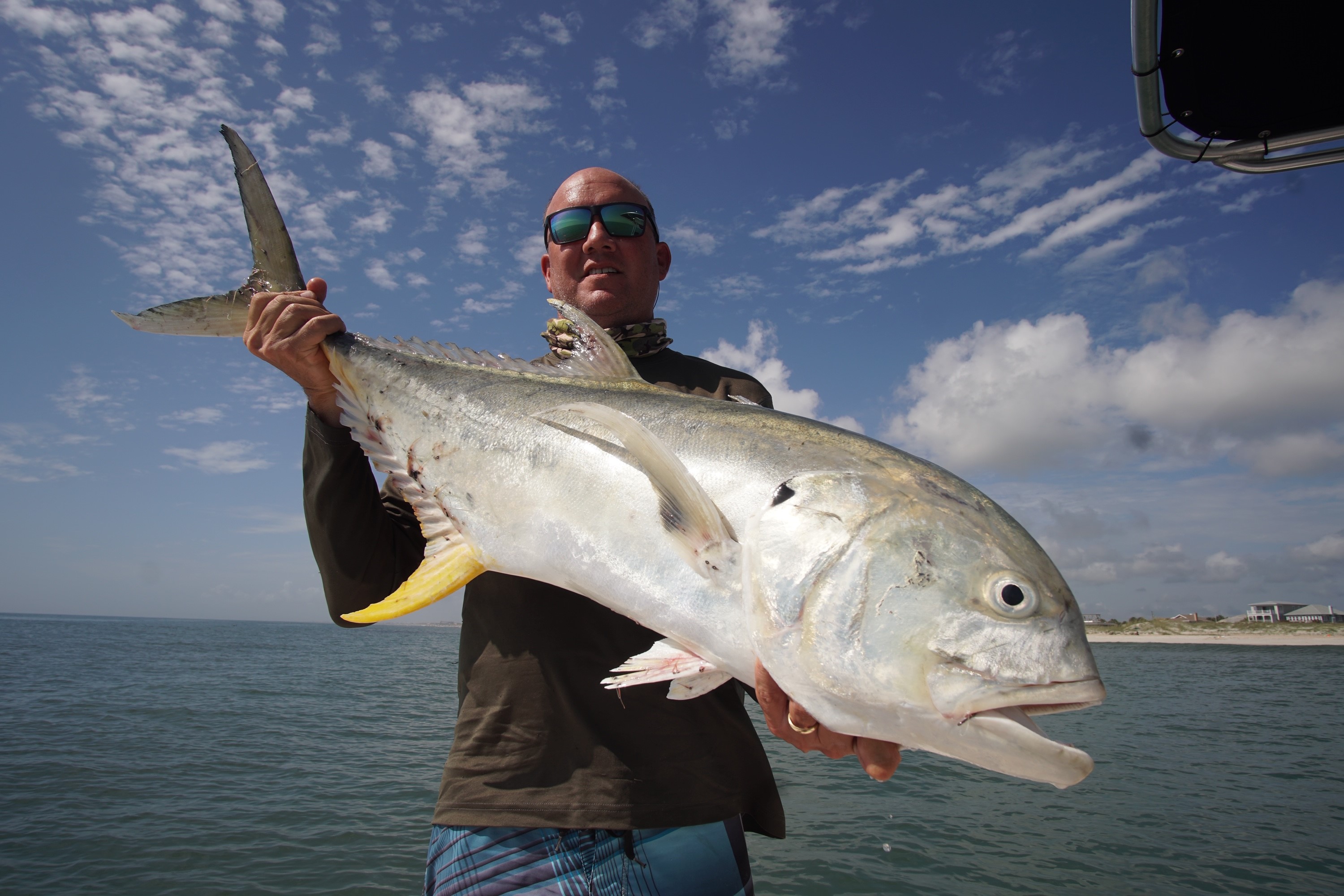Stalking Flood Tide Redfish: Learn Expert Tips From Master Guide
Flood tide fishing is unique to certain areas of the country. If you have not experienced this, you are truly missing out.
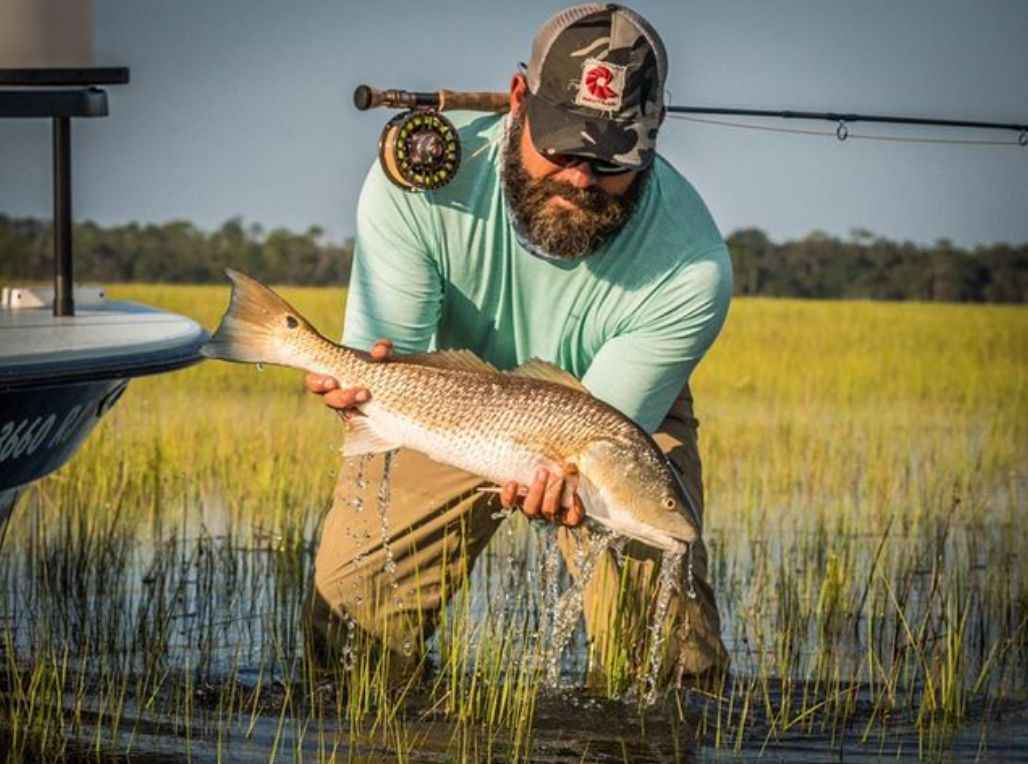
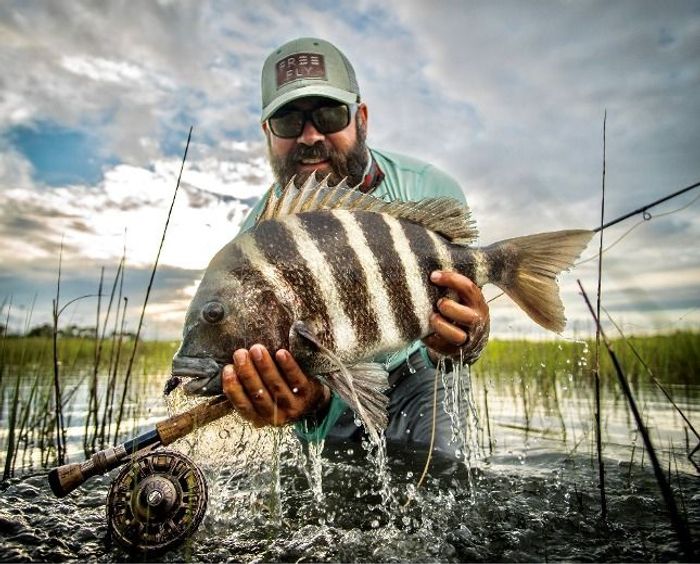
About our Author/Guide James Canelos:
James Canelos is a United States Coast Guard licensed captain that has been fishing the waters of St Augustine for over 20 years. Specializing in shallow water fly fishing and light spin, Captain James brings a great depth of knowledge about the local habitat, and techniques to help you become a better fisherman or fisherwoman.
When not out with clients in St. Augustine, you can often find him fishing the Keys, the Bahamas, and even the occasional trip off the coast of Louisiana. He believes that a good guide never stops learning and refining their skills.
With his clients at All Water Expeditions, his style is laid back, patient, and encouraging. At the end of the day, fishing is meant to be fun!
Book a guided fishing trip with James Canelos today!
Flood Tides – The magic of the flooded marsh
Northeast Florida and even northward to the Carolinas is home to vast saltwater marshes along the intra-coastal waterway. Oyster beds, muddy flats, and spartina grass make for an environment that is not only rich with life, but also breathtakingly beautiful. Maze like creek systems will make you feel lost in what can only be described as an “Old Florida” feel.

Within these marshes lives various species of crabs, shrimp, and baitfish. As you can imagine, the abundance of these food sources attracts predators such as various bird species and fish, but the king of the marsh is the redfish. The anatomy of the redfish is designed for cruising the shallows of these areas and feeding furiously on crustaceans. Large crushers in the back of their jaws allows a redfish to break apart shells of large crabs and other baits that may have a defense mechanism.
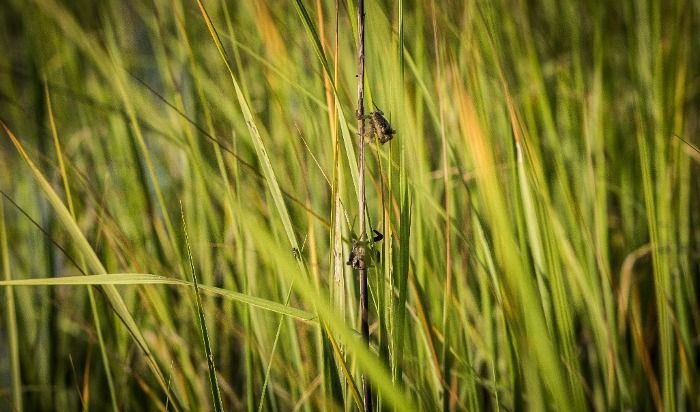
It is no secret that shallow water anglers in these areas love targeting redfish. They are abundant, feed in the shallows and make their presence known for the sight-fishermen. What may not be known however, is a unique opportunity to sight-fish tailing reds within these marshes. For any angler who has experienced the hand trembling adrenaline rush of casting to a tailing fish, this is the ultimate fishing experience.
Lunar phases coupled with large high tides create king tides during various times of the year. During these exceptionally high tides, the water will flood the spartina grass. When areas that rarely see water are flooded, it leaves the small inhabitants vulnerable.
Redfish can sense when this opportunity presents itself and will move into the flooded grass and root around for crabs. It is common to see a misplaced fiddler crab hanging onto the grass for dear life. As the redfish snoop out the crabs, they will stand on their heads to eat the fleeing bait. This causes an awe-inspiring display of fish tail waiving above the surface. They are so laser focused on feeding; they lose their instincts to remain undetected. As you can guess, this makes for an awesome fishing experience.
Being Prepared – Knowing what to look for
Before you rush out and start looking for tailing reds on high tides, there are some things to consider. As mentioned earlier, this phenomenon does not occur to often. Therefore, knowing how conditions need to align and being prepared will make your experience mush more rewarding.
Reading the tides
Flood tides will occur in most months around the new and full moon. The bulk of these tides will be in the fall months of September and October. During these months, tides are naturally at their highest point. These months will tend to be the most productive fishing months as fish are eating heavily to prepare for winter. Having a reliable tide chart with moon phases will help you plan for flood tide opportunities. NOAA releases bar pilot information that will give accurate depictions of water levels based on varying conditions such as wind direction.

Most flood tides will occur either in the evening or early morning. During the fall, a few will occur during the middle of the day, but this is not the norm. From my experience, the evening tides tend to hold more fish. This is especially true around the Full moon. The best time to fish a morning flood tide is when it is associated with a New moon.
Water temperature – other considerations
Although flood tides do occur in most months, the fish will not always move into the grass. During the colder months, the crabs have buried deep underground, leaving nothing for the fish to eat. From December through March, the flood tides are not productive for fishing. A good rule of thumb is to fish these tides when the water temperature is above 73 degrees.
What to look for to find flood spots
Knowing where to find the fish is going to increase your success rate. The optimal areas are zones that receive about a foot of water during these exceptional high tides. Google earth is a great way of finding new areas to try. Look for areas that have a grey tint to them, as this means they have seen water before. The best of these areas will be flats that have feeder creeks leading up to them. This allows the fish to have access to deeper water quickly, which in turn makes them more comfortable. Google earth is a great start, but nothing will replace time spent on the water. When you find areas that flood, review the characteristics of this area. It will aid you in finding new spots.
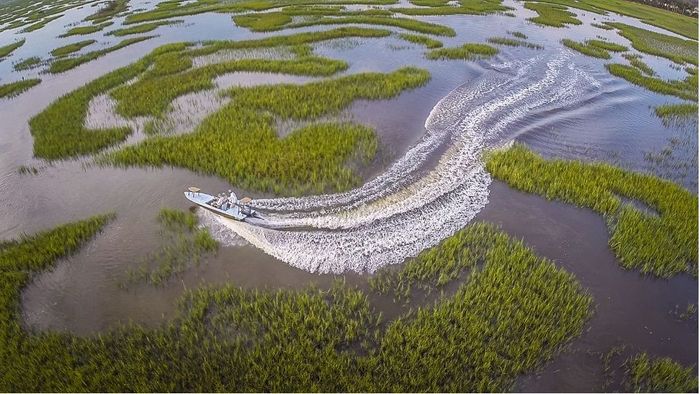
Skiff vs Wading: What’s the preference?
Lastly, even though the redfish are feeding heavily, stealth on your part is still required. The best way to approach tailing redfish is by poling a flats boat or wading to them by foot. When fishing from a skiff, the added height of the poling platform and casting platform will give you a better vantage point for spotting fish tailing from farther away. When able to, using a boat will always be the better choice. A skiff will also make less vibration and wake as opposed to tromping through the marsh. If fishing by foot, remember to wear a good pair of shoes or wading booties to avoid stepping on rouge oyster shell in the grass. I also strongly recommend wearing pants as the grass can make you itchy. Be sure to avoid deep feeder creeks when wading. Always walk in areas where the grass is visible above the water.
Fly-fishing vs Spin casting – Boosting your success rate
By far the most productive technique for fishing the flood tide is fly-fishing. If you are new to fly-fishing, do not fret. This is one of the best opportunities to hone in your skills, as fish are visible, slow moving, and often not spooky. The typical required cast is only about 20 – 30 feet. Obviously, the further you can cast, the less likely you are to be visible to fish, but flood tide fishing is quite forgiving to the novice caster. If you are not a fly-fishermen, fishing light spin gear will get the job done.
Flies
When choosing a fly, it is best to match the hatch. Most of the time you will using a crab pattern in black or brown. These are designed to best imitate small fiddler crabs that the fish are feeding on. Flies should be the size of quarter and tied on a size 1 hook. You will be casting directly into the grass, so a stiff weed guard is necessary! Fish tend to see colors differently. From my experience, orange is a color that triggers a bite. I like to incorporate some aspect of orange into my fly. Typically, I will add orange chanelle near the eyes of the fly.
In certain situations, the fish will be slurping crabs hanging off grass. When this happens, it is a good idea to throw a gurgler pattern or floating crab, as the fish are looking upward. I always have a second rod rigged with a surface fly in case I run surface feeding fish.
Lures
The main consideration when throwing lures is the size. The typical bait they are feeding on is small, so throwing large lures will not be natural. Soft plastics that imitate shrimp or crabs will work best. Look for these in black, dark brown, or new penny color.
Your lure should be weighted properly to allow you to have cast ability, but not too heavy to wear it makes a large splash when presented. Typically a 1/8 oz jig head or weed less hook will be plenty of weight. If using a jig head, it will need to be weed less. Your bait should be able to slide through the grass without being snagged. Fish will not eat a lure with grass on it.
Setting up and casting on the fish
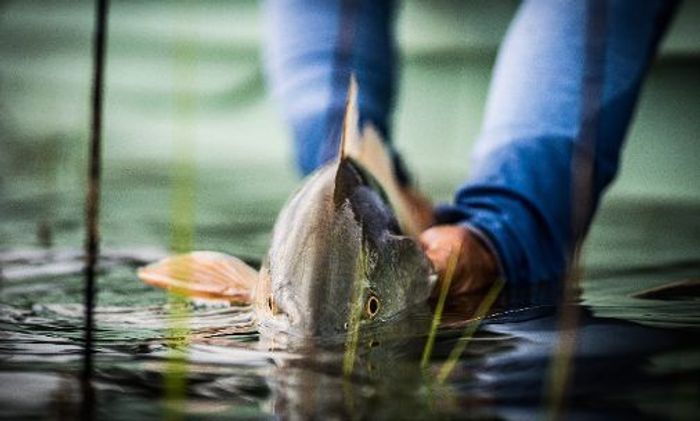
When approaching a tailing fish in the flood, move slowly. There is no need to rush anything, as a fish that is tailing is up there to feed and will usually stick around. You should maintain enough distance that still allows you to make an accurate cast.
Before you make your cast, observe what the fish is doing. Try to see if the fish is on a certain path. Many times a redfish will tail to eat a crab and then move along for the next one. If you can, predict a path he is moving along, this will allow you to lay the cast out far enough to avoid spooking the fish.
When a fish is tailing hard, his attention is on what he is trying to eat. Often times this is not the best time to cast as they will rarely see it. Additionally, it is tough to know where he head is actually looking when they are on tail. This can lead to hitting the fish with lure and sending him racing off the flat. A better approach is to wait for him to come off tail and start his search for the next meal. At this point, their sights are looking for movement or feeling for fleeing bait. This will yield a better hook up ratio. The tail is not the fish’s head. Always think about where its head is looking as opposed to focusing on its tail that you can see. I cannot stress this point enough!
When making the cast, your bait should cross the fish at a 90-degree angle using small strips or retrieves. Try to position yourself before casting to get the proper angle. The absolute worst angle is bring the lure at the fish. This will usually spook them off the flat. A bait coming at a predator is not a natural occurrence and they will know something is not right.
If your bait is presented properly, the fish will eat most of the time. The take of your fly or lure will be aggressive and an incredible experience! Once you have the fish hooked, try to keep your rod tip high to avoid drag being created against the grass.
Flood tide fishing is unique to certain areas of the country. If you have not experienced this, you are truly missing out. It is personally one of my favorite ways to fish. For the fly-fisherman or sight fisherman, I would strongly recommend giving this a try. I guarantee you will be hooked!

